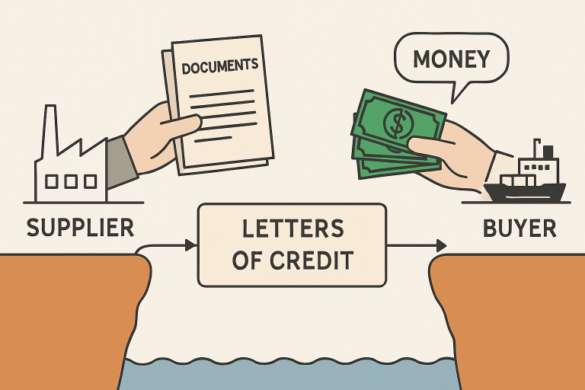Introduction
Registered Education Savings Plans (RESPs) are designed as a smart, tax-advantaged way for Canadian families to save for their children’s post-secondary education. But life is unpredictable, and not every child follows the same path. What if your child chooses not to attend college, university, or another qualifying institution? Knowing your options ensures you manage those hard-earned savings wisely. Use RESP calculators early in your contribution journey to understand how much you can save and plan alternative strategies.
RESPs involve several components—your own savings, government grants, and investment growth. What happens when plans change? Whether you’re considering waiting, transferring, or withdrawing, it’s important to know how each choice affects your financial goals and the original intent of providing educational opportunities.
Keep the RESP Open
If your child isn’t ready to decide on post-secondary education, one of the simplest solutions is to keep the RESP account open. RESPs can remain valid for up to 35 years, giving your family time to adjust plans or for your child to reconsider. This extended window makes it a flexible solution, especially for young adults pursuing education later or changing their minds.
It’s worth noting that RESPs aren’t limited to just universities or colleges. They also cover a range of eligible programs, such as apprenticeships, trade schools, and recognized training institutions—so even non-traditional pathways are supported. The Canada Revenue Agency (CRA) maintains a list of qualifying institutions and programs, which can help broaden your child’s perspective on eligible education.
If you want to understand the specifics of various plans and compare options for your family, consider consultant services or trusted financial guides from major banks and financial publications. They often help clarify scenarios where post-secondary plans are delayed or uncertain.

Transfer the RESP to Another Beneficiary
Should your original beneficiary decide not to pursue post-secondary education, most family-oriented RESP plans allow you to name a different child or sibling as the new beneficiary. If you have planned with a family RESP, you can seamlessly reallocate funds for another child’s educational future. For individual RESP plans, Canadian rules allow you to change the beneficiary if the new recipient is under 21 and related to the original beneficiary as a sibling.
It is crucial to track overall contributions. The lifetime RESP contribution limit per beneficiary is $50,000, so exceeding this cap may result in penalty taxes. Additionally, grants like the Canada Education Savings Grant (CESG) may be recalculated or adjusted depending on how and when the beneficiary is changed. Be sure to verify eligibility and consult a financial professional if unsure about plan regulations.
Withdraw Your Contributions
Another route is to withdraw your own RESP contributions. Since these funds were deposited with after-tax dollars, you can withdraw your principal without facing taxation or penalties. However, any remaining government grants—such as the CESG or the Canada Learning Bond—must be returned to the government if not used for qualified education expenses.
This approach helps you retain your original savings but may lose government incentive portions. Still, this is often the cleanest exit for families facing major changes in direction if educational plans are permanently shelved.
Transfer Accumulated Income to an RRSP
RESPs grow through investment earnings, separate from your contributions and government grants. Suppose the RESP has been open for at least 10 years and the original beneficiary is older than 21 without attending post-secondary education. In that case, you may transfer up to $50,000 of accumulated income (not principal) to a Registered Retirement Savings Plan (RRSP)—as long as you have sufficient RRSP contribution room.
This transfer lets you continue to defer taxes on your investment gains. For many families, shifting unused education savings to retirement savings makes practical sense.
Withdraw Accumulated Income as an AIP
You can withdraw the accumulated income as a last resort using an accrued income payment (AIP). This amount is taxed at your personal income tax rate, plus an additional 20% federal tax (and, in Quebec, a further 12% provincial tax). Remember that government grants must still be returned in this scenario, and the penalty can be quite hefty. Hence, this path is only suitable if other solutions aren’t appropriate for your situation.
Discussing AIP withdrawals with a tax professional may help mitigate some consequences and ensure no unnecessary penalties are overlooked. Where possible, prioritize more tax-efficient options first.
Transfer Funds to an RDSP
RESP rules accommodate exceptional circumstances. Suppose the original beneficiary has a severe disability. In that case, it may be possible to transfer the accumulated income from the RESP directly to a Registered Disability Savings Plan (RDSP) without immediate tax consequences. This provision ensures that the funds can support the child’s long-term financial security rather than being lost or heavily taxed. There are strict rules regarding eligibility and transfer limits, so consulting an advisor with experience in tax-advantaged plans for people with disabilities is advisable.
Final Thoughts
There are multiple responsible ways to manage RESP funds if your child opts not to pursue post-secondary education. Whether keeping the plan open, reallocating to another beneficiary, moving investment income to an RRSP, or, as a last resort, making a taxed withdrawal as an AIP, your savings can still support your family’s financial future. In the event of a disability, RESP-to-RDSP transfers can offer special relief. Given the complex rules and potential penalties, it’s always wise to consult a licensed financial advisor. Careful consideration ensures the funds you set aside work in your best interest, even if plans change.




